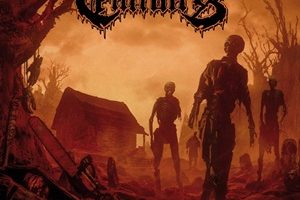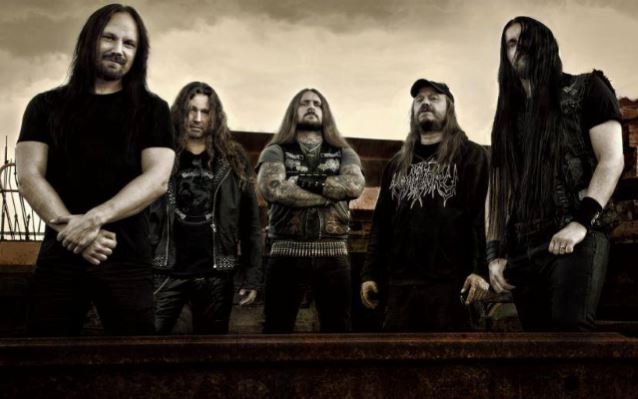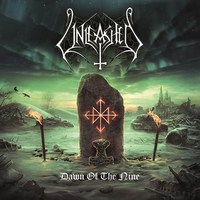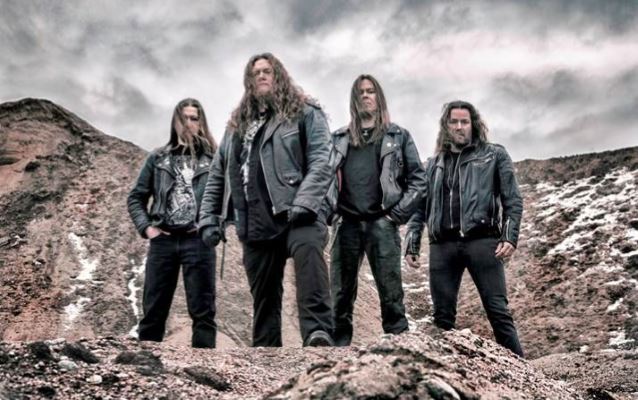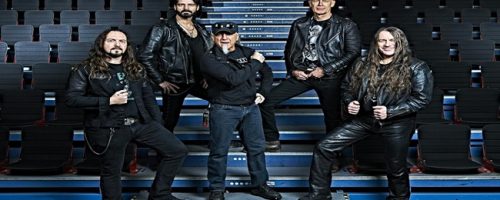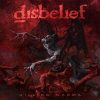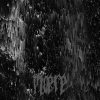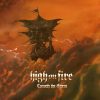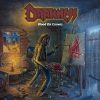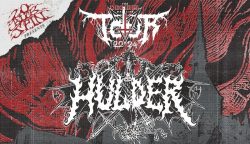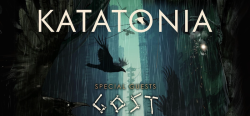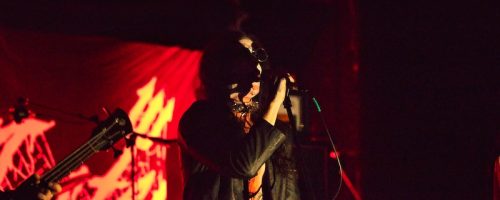Unleashed – The Way of Life
Thursday, 25th November 2021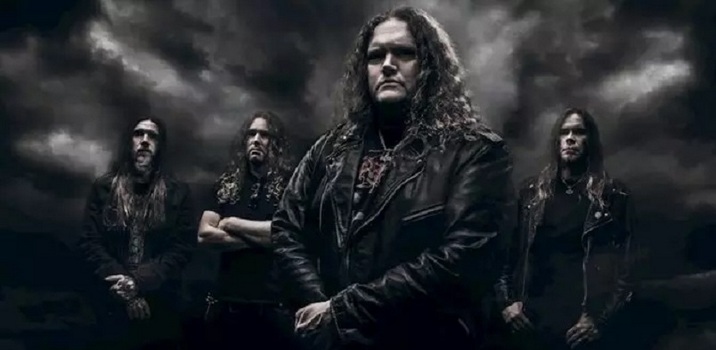
Pioneers in the Swedish death metal movement for over thirty-two years, Unleashed are a steady, reliable presence when it comes to their output. No Sign of Life is the fourteenth studio album, and fifth in the Odalheim storyline that keeps the creative juices flowing. Striving to appease their faithful following while also keeping the bar high as musicians themselves, the record contains the versatility, passion, and power we’ve come to expect out of this Viking-oriented outfit. We reached out to vocalist/bassist Johnny Hedlund through Zoom recently and he was happy to bring us up to date regarding the next chapter of the storyline, cover art details, favorite memories regarding the lengthy career, the state of death metal in his eyes, plus interesting stories regarding social media use and his son’s development as a goalkeeper.
Dead Rhetoric: No Sign of Life is the fourteenth Unleashed studio album, and fifth in the series of the Odalheim storyline from your creative mind. How did you see this set of material developing from initial ideas to final completion, and where do you see this slotting in the catalog of Unleashed discography?
Johnny Hedlund: First of all, I think that this is something that we really didn’t expect to happen to be honest with you. I wrote this book together with a friend of mine that never got finished. It’s an unexpected thing, but this is the fifth consecutive album. It’s been going on for quite some time now, it works out very well. Everyone says to keep on going so that’s what we are doing with this.
We’ve got fourteen albums out in thirty-two years, it wasn’t something that we really planned. Obviously you plan the next album, but it wasn’t in the plan to make a long storyline of this magnitude.
Dead Rhetoric: Was there anything different in the steps to develop this material and recording it- especially given the pandemic situation that developed in the past couple of years?
Hedlund: I think it could have, but everything is so extremely digital anyways. We are sending files back and forth to each other, it doesn’t matter if it’s music or lyrics. Just like all the other bands, we haven’t been able to meet up, play all the festivals that were booked. As far as the creative process goes and as far as the album recording, there were no changes in the working process.
Dead Rhetoric: What’s the crux of the Odalheim storyline that unfolds over the course of this record? And how long do you foresee being able to continue things – do you already have the rest of the story mapped out or do you take things as they go on an album by album basis?
Hedlund: It continues from the last song on the previous album “Open to All the World”. The last song ended with a great war in Jorsala, which is present day Jerusalem. The Midgard warriors got victorious in the final battle on that album, and decided to persecute the armies of the White Christ at the Sinai Peninsula. That is where the new album starts. Since they started to be disappointed in their leader and started to lose their faith, that’s why the first song is “The King Lost His Crown”. And from then on, most of the events of this album occur in the Sinai desert. Hence the album cover and etc. And that’s where things continue.
The thing is, even though this is the fifth album with the same consecutive storyline, we always start the new creative process talking about these things. Musically, it’s no big secret that we are going to just keep on doing new songs, that will happen around February-April of next year to start working on a new album. It takes a while, we don’t want to create an album in one month and call it a day. It’s a long process, and it’s the same with the lyrics. We will talk more about the storyline, live or die, at that time. We’ve been doing this now for a while, people say keep on going. Most importantly, everybody out there seems to think it’s a good idea as well. As long as people like it and as long as the story is still alive, then there will be reason to keep doing this. And it’s good fun, actually.
Dead Rhetoric: How did the vibrant cover design come about this time? There appears to be a multi-layered angle to the work, including little tidbits for the listeners to digest that coincide with specific songs on the record…
Hedlund: Yeah. Like I said previously here, the album cover is really in the desert so to speak, hence the surroundings with the mountains and the desert, a doomsday’s feeling to it. And the Odin’s ravens circling on the album, and the Thor’s Hammer is always present in a battle like character. The reason for the name of the title, it’s obvious when the Midgard warriors persecute the armies of White Christ, what they find days and weeks after searching is literally no signs of life. That is how the title came up.
Dead Rhetoric: Given the fact that as a quartet you’ve been together now without a lineup change since the mid-90’s, do you feel that band chemistry, teamwork, and understanding of what makes for an ideal Unleashed song has helped keep the consistency and strong output top of mind for the band?
Hedlund: Right, yes. It’s always been something that we’ve been very anxious to keep, the friendship within the band. I think thirty-two years says it all, you can’t have a band that has been going on for so long without being seriously good friends. And you need to be in agreement on many, many things. Not just what to do, but also what not to do. That’s extremely important, because most bands know what to do, but if you can’t agree on what you shouldn’t do, you will have a hassle in some way down the line. We’ve really been doing this right for a long time now. We’ve agreed that every band member has to help out, even with the small things. So that it doesn’t become a one man show. You need to be seriously good friends or a band like this will crash.
Dead Rhetoric: You mentioned in a previous interview online that you handed the music part of the songwriting over to guitarist Fredrik Folkare where you focus on the lyrics. Was that significant in terms of trust, to pass that over as his consistency when it comes to the songwriting has been amazing over the last few albums?
Hedlund: Thank you. And this happened at the end of the 1990’s. I just felt that the songs that he came up with were so much better than the ones that I came up with. I figured well, that also means I could concentrate more on the vocal melodies, that I wanted to put a lot more work into. I worked on the lyrics and melodies, and from that point through 2001 and forward I’ve been putting a lot more effort into the vocal lines, melodies, and lyrics – and the storyline. Since Fredrik is easy to work with, his guitar picking is amazing, all the songs he creates and sends to the band – these days, it’s not really a surprise anymore. He knows what the band likes. One and a half years ago he started sending me songs for this new album, and I would tell him to go for it. If you switch band members every other year, you wouldn’t know if it works.
It was a trust issue in the beginning, but ever since then, it’s been a flow of good things that happened when it comes to the creation of new songs. So I’m really happy with that.
Dead Rhetoric: I can tell you’ve really worked hard at your vocals over the years. Has it been important for you to be distinct as well as understandable in the death metal genre with your vocals?
Hedlund: Yes, that’s been a goal of mine. It may not have been so obvious from the start, but it has been something I’ve wanted to do. Ever since I started listening to Venom’s Black Metal, I figured that is the kind of vocal I want to get closer to. Obviously, my voice and my singing isn’t what Cronos’ is, the way he pronounces and sings is clearer than most death metal vocals. I wanted a mixture of that. Now over the past fifteen years, it’s a lot easier for me to work on that. Also I have the time and the money to buy a PA system that would answer to my needs. Back in the day, the first ten years of our existence, we didn’t have the money to buy a proper PA system. I practiced vocals through a fifteen-watt bass amplifier. And you can imagine how that sounded in a practice room the first ten years, it was fucked up. Nobody heard what I was singing in the practice room, anyway.
Dead Rhetoric: What would you consider some of the benchmark highlights for Unleashed in your career? Specific albums, shows, tours, or festival appearances that will stay forever embedded in the memory banks where you knew the band was making an impact through your music or live performances?
Hedlund: These are many of course. If you should go back into the early days, obviously the first couple of tours were something that you remember a lot about. It was so early, and more of a dream than reality to be honest. Just to sign a record deal and getting out there, going on a full European tour and then going on an American tour, it was actually happening. I would send postcards back to Sweden to my friends, saying where I am at the Grand Canyon. It was a joke back then, now people would think I am on vacation. Back in the day, it was amazing and stunning. A lot of people could not believe it was happening. I even remember many of the backstage areas and practice rooms from the first tour. Which is crazy, that was more than thirty years ago, but I still do remember that. Even parties, and there have been a few along the road. It was so fresh and new.
I remember a lot of things that happened five years ago as well. I could go on for two hours for that. It’s been a good run. And I am happy that we can still do this.
Dead Rhetoric: Where do you see the state of death metal currently? Do you believe it’s in a healthy state, especially considering the steady work of the original artists who developed this style as well as fresh blood who put their own stamp on the proceedings?
Hedlund: It isn’t so clear to me where death metal is going right now. I guess my boring answer, it’s really hard to tell. My job is to develop the Viking death metal style. And that’s really all I can do. We are trying to make that more interesting and better, better production and stronger songs, more memorable songs. With every album that comes out, we try to put out the best representation of us, and we want to put out great live sets so that people look forward to seeing the band.
As far as the entire scene goes, it’s hard to say because the scene develops differently depending on the country. Most definitely there seems to be a strong interest in the genre, I can’t see signs of things getting smaller. I would love to see even more people bringing their sons and daughters to the festivals, so to speak. I try to do that myself, and I think that’s something we should all work on because if you love heavy metal, death metal, the future isn’t with people that are 78 years old – we have to look a little bit ahead of time so that metal stays forever. That’s what I would really like to see.
Dead Rhetoric: How did you spend your downtime over the course of the pandemic? Did you develop any new hobbies, passions, or interests – or just enjoy spending more time at home with your family?
Hedlund: I did (spend time with my family) too, but something that has occurred is my eleven-year-old son is quite the soccer goalkeeper. He practices four times a week and I have become his goalkeeper coach. I’m also the assistant coach on his team, he’s practicing at a very top level. That is a brand new thing for me. I was an assistant coach before on his team, but I didn’t know things were going to be this professional and that he was going to aim so high at this. I’m following along the adventures through him, and I have no idea where it will lead to, but many times a year he is practicing with some of the best in the country. It won’t die anytime soon. It’s a lot of work, but it’s a lot of fun too.
Dead Rhetoric: What are the challenges that come up for Unleashed this deep into the band’s career? Do you believe it’s a balancing act to satisfy what you want to achieve as musicians but also appease the expectations of the long-time faithful followers of the band?
Hedlund: I think that we have never set up a goal that would say here is where we are going, exactly. I think the reason for that is, it should if so meet the expectations. The only goal we can have really is to set out what we said we would do, which is to create better albums all the time, and hopefully the songs will be at least memorable if not better on the next album. I don’t think I can have another aim that would meet other expectations. I’ve thought about that a lot lately – the music, the band that we have, the lyrics and music we are creating, it’s not just a band – it’s a way of life and we’ve been living that way for more than thirty years.
The biggest hope I can have is the people that have liked our albums in the past will like our albums in the future. I don’t think it’s reasonable to have another goal right now. We are not a company, we are a band.
Dead Rhetoric: How do you think as an older band you’ve been able to handle the changes in the promotional landscape with social media, streaming, and the internet compared to the older days of tape trading and physical fanzines?
Hedlund: We’ve done what we could do, I guess. There’s always this feeling that you could do more with social media. There isn’t a certain goal or aim where we say here is where we should be in two years. I don’t know how to measure it. If you have a goal, and it’s an absolute goal, you need to measure it. I don’t care if I sell 3,000 records or 300,000 records. My life will be the same. I will create new songs and lyrics, I’m still going to want to play shows and festivals, drink beer, and meet my friends all over the world.
If you work with social media and put some time into it. We haven’t really done that in the past, and we know that. We wanted to share some of our moments with our warriors out there. That was fun, we hadn’t done much and we posted some strange old pictures that gave us memories we started laughing at about ourselves. Maybe there are more people that want to see these (pictures). It’s old, I thought no one wanted to see this. We argued within the band, and decided to post maybe one picture and see if they would like it. Maybe they wanted to see a new picture or hear a new song. We figured, we are laughing and talking about this – why wouldn’t other people do the same? We started doing that, and it got great reactions. I know for sure many bands work harder on social media, Unleashed was never that kind of band. This was a strange experience.
Dead Rhetoric: With fourteen albums to choose from, discuss the challenges of putting together a setlist for festivals and headlining situations?
Hedlund: An hour ago I practiced the new setlist. We were debating what songs to put in the setlist. It’s a real challenge. I still don’t know what’s right or wrong. The first show after the pandemic is the 10th of December in the Netherlands, and the setlist will have to be done. If you play an hour, and if you play a song off every album, that’s fourteen songs – that’s just about an hour. We will see. Normally you don’t play one song from each album, you play a few new ones. I hope we have done the right thing.
Dead Rhetoric: What’s on the horizon for Unleashed over the next twelve months when it comes to promotion, live shows, festival appearances, etc.?
Hedlund: If everything goes back to normal at a decent pace, we will play the shows and festivals that we booked over two years ago. We want things to work out, we are in the UK in February, Sweden in March, and things will move forward. It’s been far too long for sure.











